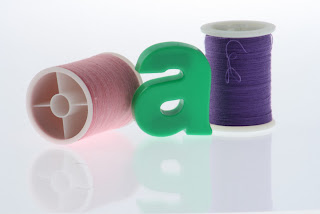Today we looked at the basic principles of using an SLR on manual
setting, mainly playing with the aperture, shutter speed and the ISO
settings. To round up the priciples;
Aperture: The size
of the gap letting light into the lens. Reducing the aperture increases
the depth of field, and also lets less light into the lens.
Shutter
Speed (exposure): Commands the amount of time it takes for the shutter
to open and close. A longer shutter speed will leave light to enter the
lens for a longer period of time, meaning the image will be brighter.
ISO:
Changes how sensitive the image sensor is to light. The lower the ISO
setting the higher quality the image, however little will show up if
there is poor light. As light deteriorates the ISO will have to become
higher to make the camera pick up more light, however the quality can be
reduced.
In this photograph the shutter speed is too slow or the aperture is too set so not enough light can enter the camera. The image is too dark...
This photograph displays the opposite effect. The shutter speed is either too slow (open too long) or the aperture is letting too much light into the camera. As a result the image is far too bright.
In this image the exposure is just right, if a little to high. However the Light Balance is still set to auto and I have begun using incandescent bulb so the photo has taken on a blueish tinge.
In this photo the L/B settings have been rectified and the image is as close to reality as I think these cameras can get...
Experimenting with darkness here, I have allowed the camera to pick up more dark tones and less of the bright light is reflected into the lens.
Even thought the light dark balance was fairy low in reality there appears to be a higher contrast here. i think this could be because the ISO has been sett to 100 here, although I am not sure.
Here I played with some kind of light box, in this photo the camera has been set with a shutter speed to fast and as a result the whites are very grey.
This photo improves on the last. I have also managed to capture some reflection. I found it hard to find a perfect mix between having a grey background and unrealistic florescent objects.
This image displays the depth of field these cameras can record. Changing the aperture will change how sharp the lens appears in the image.
I took these photos for fun with the fish eye lens. They also allowed me to experiment with extremes of light and dark in the same image. The brightness of the lighting lamps we used was in huge contrast to the darkness of the corners of the room. For these images I only remembered to fiddle with the shutter speed and the aperture however in hindsight I could have altered the ISO settings also. The bottom image has a very log shutter speed and a tiny aperture and picks up movement around the room. The top image has a massive aperture and a very high shutter speed which combines to allow a very sharp image showing a fairly realistic but dark view of the room.












No comments:
Post a Comment